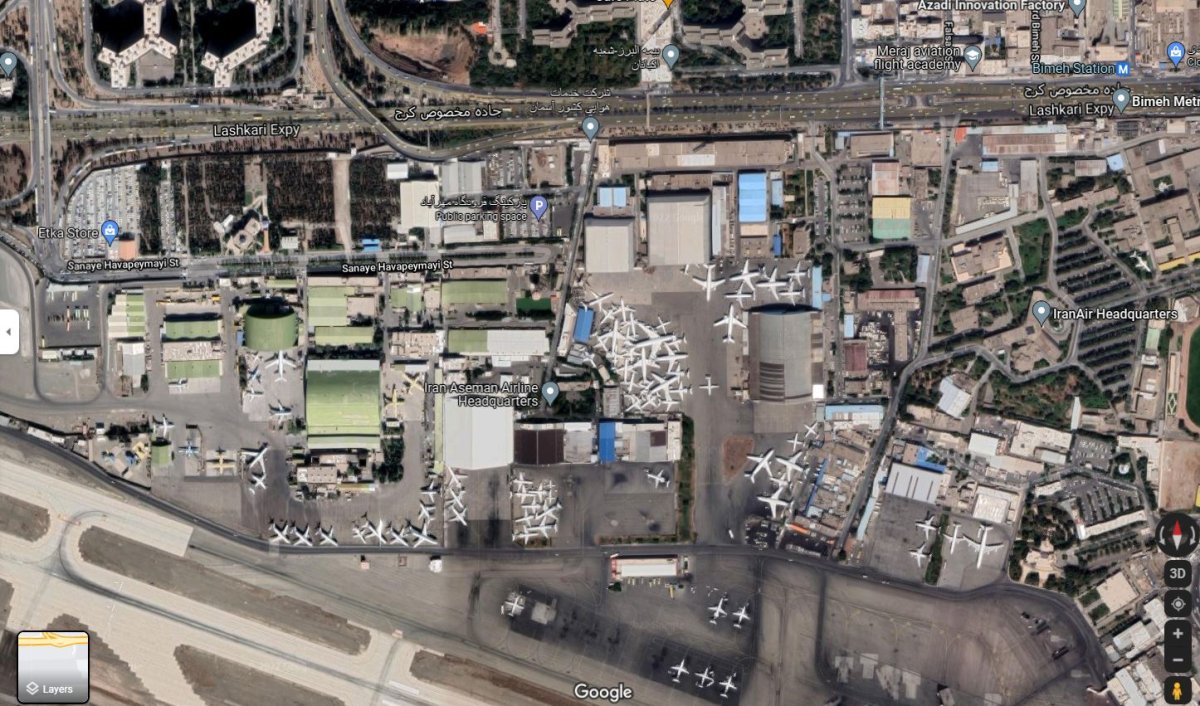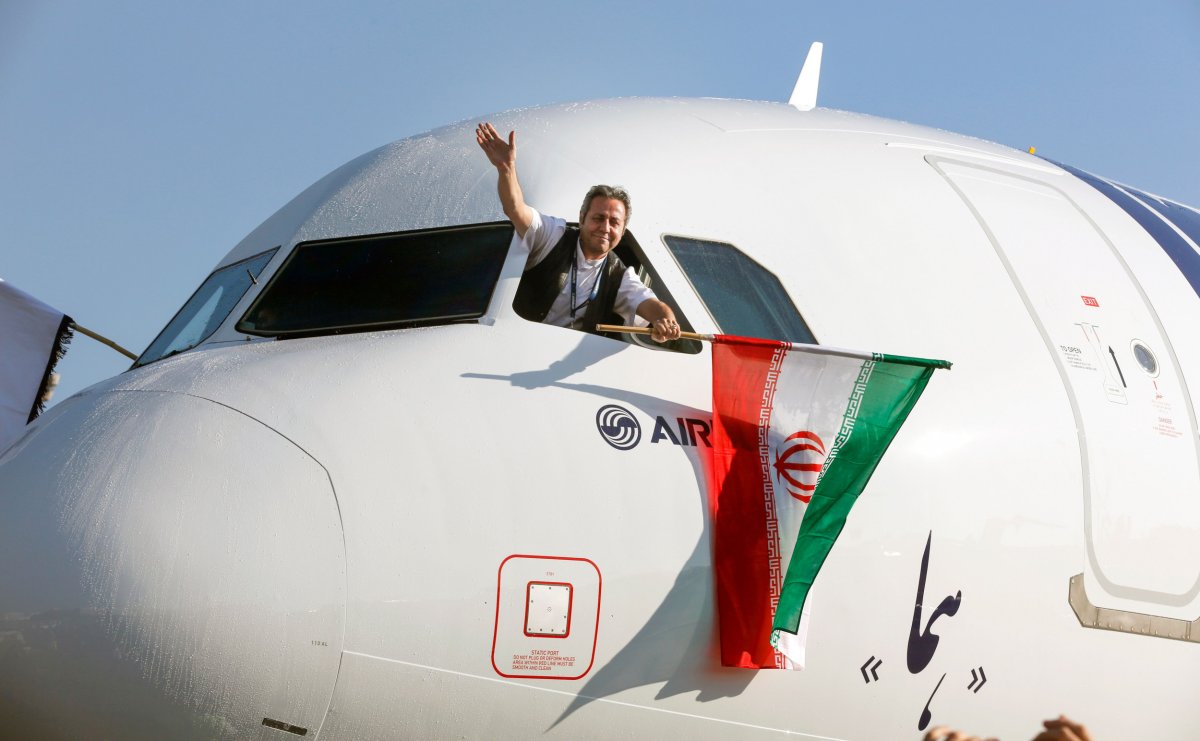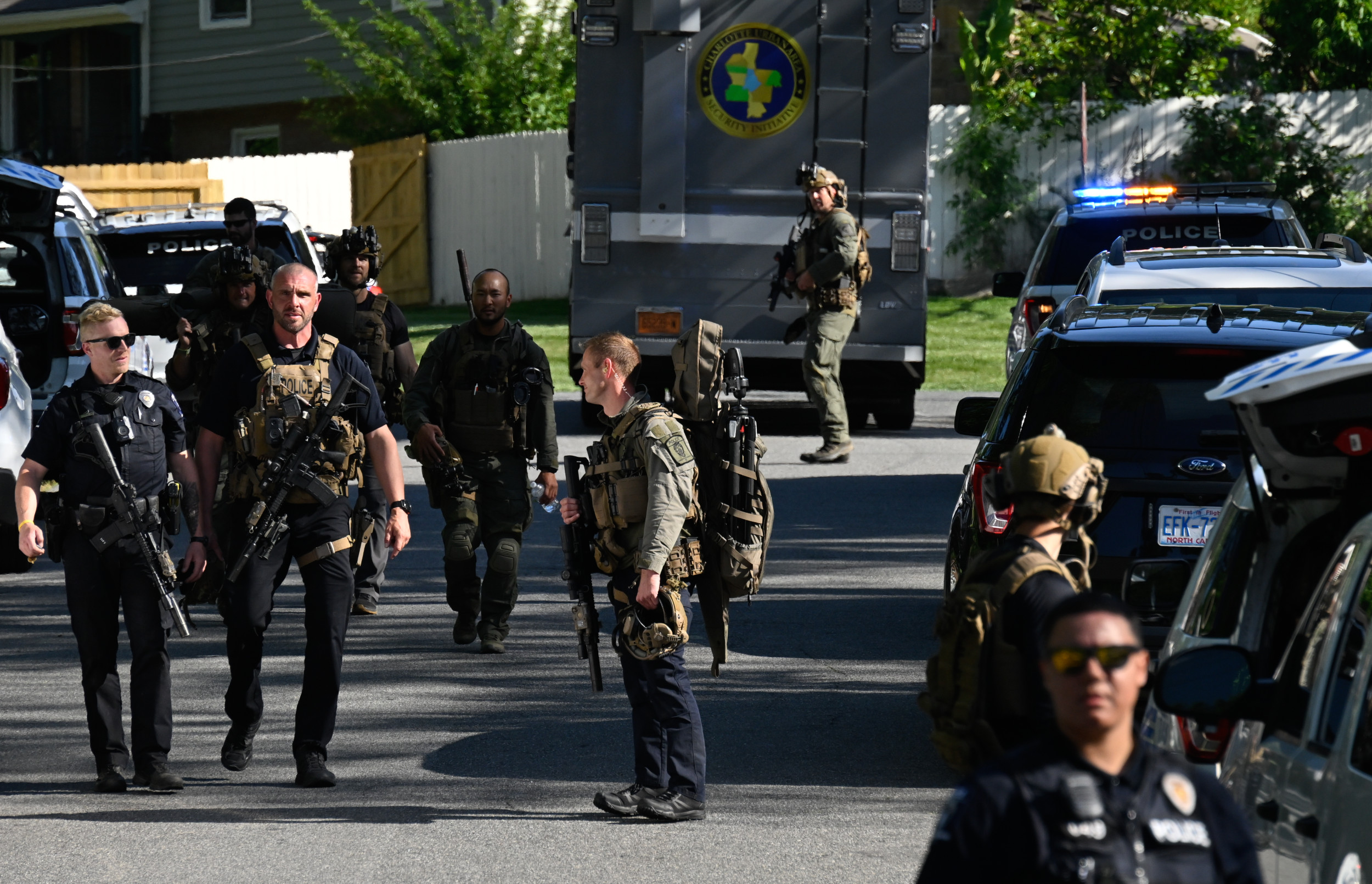A photo of airplanes clustered together at an Iranian airport has stunned the internet, as the country's beleaguered aviation industry continues its attempt to operate amid restrictions.
The snap of Mehrabad International Airport, in Tehran, has caused a stir since being shared to Reddit by ERMIYA-BAHRAMI last month.
Uploaded to the site's Interesting As F*** forum, it was upvoted and liked more than 10,000 times as people speculated the photo was edited.
The image was taken from Google Maps in 2022, by Maxar Technologies. It shows at least 20 planes, of varying sizes, situated at the international airport.

Some Redditors were in disbelief, as Upbeat_Giraffe8364 asked: "There's no way this is an active airport.... is it?"
The photo lays bare the reality facing Iran's ageing fleet, with numerous planes grounded due to technical problems. The country has long been known to strip other aircraft amid the sanctions on ordering spare parts and planes.
One Redditor, AntiheroZer0, pointed out: "Good eyes! If you look around the building with the blue roof. You can basically see every engine just laying on the ground."
Houdinii1984 also noted: "Just a quick note, the plane on the far left, middle height is missing portions of its wings and backs up the parts explanation."

While Scrotius_Minimus commented: "Yup. Look closely at the 747. You'll notice the engine cowls are open, engine probably removed as these are usually the first thing to be scavenged for parts."
And Sofarbeyondfucked added: "Great answer. These are "cann birds," cannibalized for parts to keep other aircraft operational."
Former Iran Air pilot, Ross Aimer, who flew with the airline from 1969-1978, including in and out of Mehrabad airport, explained all the airplanes in the photo are civilian aircraft, including Boeing, Airbus and some Russian liners.
Aimer, a retired United Airlines pilot, told Newsweek: "In that picture they're without engines, without parts, so they probably cannibalized those old Russian airliners too.
"Obviously they're all basically junk right now, like a junkyard, or an aircraft graveyard basically, we call them boneyards."
He explained in aviation the practice of "cannibalizing" planes occurs when one has parts which can be salvaged to make another airworthy, such as the autopilot or an engine.
"For example the engines have a certain life span, after which you have to take them off, send them to a shop and rebuild it, almost like brand new, you disassemble them. Some of those engine parts are highly specialized, they [Iran] probably couldn't duplicate it.
"So what they do basically is if one of these airplanes that are in that picture has an engine that has little more time left on it they literally remove an engine, put it on this particular airplane that they're going to fly.
"And that act is called cannibalism because you're literally robbing a part from one airplane putting in another one to make it work.
"They were able to get some black market stuff, and then some of the stuff they could manufacture themselves, obviously they tried, the ones they couldn't, they just cannibalized.
"They've scavenged enough from it that they're no longer of any use, basically they're just a pile of junk there, eventually they turn them into beer cans," he said.
Aimer identified one plane as the 747-200, capable of carrying hundreds, explaining: "Not too many airlines use them any more. Not too many people fly them anymore."
Indicative of how old Iran's fleet is, the Boeing 707 made its inaugural flight in 1957, with the last scheduled flight in the US in 1983, according to Britannica.
But long after western airlines upgraded to newer models, the last 707s in service were operated by Saha Airlines, in Iran, which used the older crafts for passenger flights up until 2013. After that it was used by the military to transport cargo.
A 707 plane crash in 2019, at Fath Airport, Iran, killed 15 out of 16 on-board.

California-based Aimer, CEO of Aero Consulting Experts, said cannibalizing planes was "safe" to a certain degree.
"I mean you can't extend it forever, at some point you're just gonna have to give it up. They [Iran] did manage to [keep going], despite of everybody's prediction that they won't be able to operate as they did, for almost 40 years and in total sanctions, which is kind of incredible, if you think about it," he added.
Iran has a long history of keeping its aircraft air-worthy amid restrictions, despite most being bought during the reign of the Shah. As far back as 2013, Reuters reported other planes were stripped to keep others in the air.
"For years, aircraft such as these have been kept in service through parts imported on the black market, cannibalised from other planes or reproduced locally, aviation sources say," they noted.
Speaking to Newsweek, the General Manager of Public Relations of the Islamic Republic of Iran Airlines, Hossein Jahani, told Newsweek the current number of operational aircraft "depends on various factors," such as being inspected, so he wasn't able to share an "exact number."
Iran has been forced to resort to cannibalizing crafts, and other measures, to keep its planes in the sky amid crippling sanctions for four decades.
Sanctions were first imposed in 1979, in the wake of the hostage crisis at the US embassy in Tehran, following the deposition of the Shah during the Iranian Revolution.
Sanctions widely remained in place until 2015, when various countries, including the US and the UK, signed the Joint Comprehensive Plan of Action (JCPOA).

Commonly referred to as the nuclear deal, it saw a significant easing of US, UN and EU measures in return for Iran curbing its nuclear program.
But President Donald Trump's administration abandoned the deal in May 2018, and re-imposed sanctions.
The brief respite allowed Iran to buy and lease crafts and parts, with the country ordering hundreds of new planes. It signed multi-billion deals with Boeing, Airbus and ATR, but only a handful arrived.
Speaking to Newsweek, Jahani added: "During the negotiations on the Comprehensive Joint Action Plan, 13 ATR aircraft were sold to us, which, despite the obligations under the contract, were not supplied with parts for this aircraft model, and the other party failed."
He said the biggest challenge the aviation industry faces is the sanctions, stressing: "We are not allowed to import new planes and their parts."
Soon after President Joe Biden's inauguration, his administration signalled the US wished to resume talks with Iran, in a bid to revive the nuclear deal. On Friday, Biden's administration restored sanctions waivers to Iran.

Correction 2/9/22, 4:15 a.m. ET: This article was updated to state one of the planes is identified as a 747-200.
Uncommon Knowledge
Newsweek is committed to challenging conventional wisdom and finding connections in the search for common ground.
Newsweek is committed to challenging conventional wisdom and finding connections in the search for common ground.
About the writer
Rebecca Flood is Newsweek's Audience Editor (Trends) and joined in 2021 as a senior reporter.
Rebecca specializes in lifestyle and viral ... Read more
To read how Newsweek uses AI as a newsroom tool, Click here.








